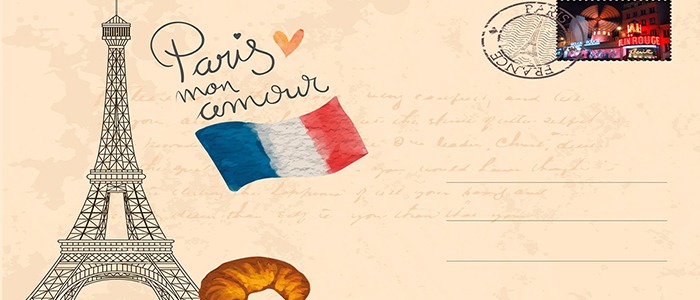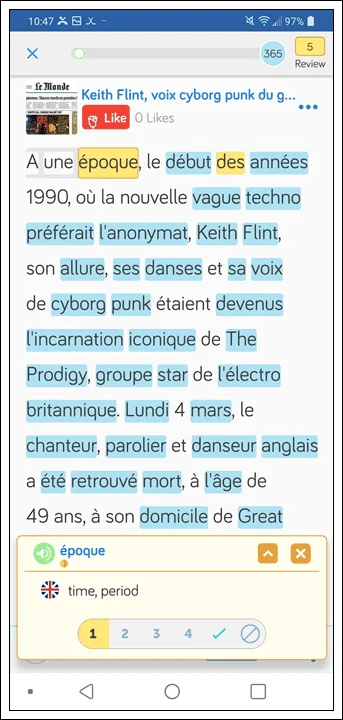Tips for Learning the French Past Tense
French is a beautiful language with many beautiful words. However, the French past tense is a grammar structure which is often feared by students of French because of its complexity. Have no fear! This article will guide you step by step on how to form the past tense in French. There is even a recipe for you that will make remembering how to form the past tense in French a piece of cake.

Before You Get Started With the French Past Tense
There is some background information you need to know before you start to learn the French past tense. The first thing you will need to review is how to conjugate the verbs avoir and être (to have and to be). Here is a quick review:
Avoir (to have)
J’ai – I have
Tu as – You have
Il/Elle/On a – He/She/One has
Nous avons – We have
Vous avez – You (plural) have
Ils/ Elles ont – They have
Être (to be)
Je suis – I am
Tu es – You are
Il/Elle/ On – He/She/ One is
Nous sommes – We are
Vous êtes – You are
Ils/Elles sont – They are
It is important to be able to identify which form of the verb avoir or être your subject will take when forming the past tense. It is easy to identify the correct conjugation if your subject is a pronoun such as je (I) or nous (we) but it gets trickier if you are given names or groups of people. A single person would take the il or elle form of the verb. For example, Charlie would take the form Charlie a or Charlie est (Charlie has or Charlie is). A group of people would take the ils or elles form of the verb. For example, Elizabeth, Jane and Erika would be Elizabeth, Jane et Erika ont/sont. Singular groups of people such as la famille (the family) or l’équipe (the team) would take the il or elle form:
La famille est sur l’autobus. – The family is on the bus.
L’équipe a un match de football ce soir. – The team has a soccer game tonight.
The Past Participle
The second piece you will to know is how to form the past participle of a verb in French. For regular verbs ending in er, ir and re, the past participle is formed by:
| Dropping | Adding | Example |
| er | é | Parler → parlé |
| re | u | Vendre → vendu |
| ir | I | Partir → parti |
Putting it All Together: How to Form the Past Tense in French
To form the past tense in French you will need a subject, a helping verb (also known as an auxiliary verb) and a past participle. To help you remember these three components here is a recipe:
Subject + Avoir or Être (conjugated according to the subject) + Past participle
Here are three examples of the past tense in French for er, re and ir verbs:
Ex. marcher → marché (To walk → walked)
Elle a marché. – She walked.
Ex. Attendre → attendu (To wait → waited)
Nous avons attendu. – We waited.
Ex. Finir → fini (To finish → finished)
Tu as fini. – You finished
English Translations of the Past Tense in French
There are three possible ways that the French past tense translates to English. Keep this in mind if you are doing any translating from English to French or vice versa. The following is an example using the verb danser (to dance) in the past tense.
J’ai dansé – I danced
J’ai dansé – I have danced
J’ai dansé – I did dance
In each case the French past tense is the same but the English translation is a little different. They all express the past tense just in slightly different ways.
Which Verbs Take Être, and Which Take Avoir?
Transitive verbs or verbs which describe coming and going movements take être in the past tense. To help you to remember the verbs that take être, think of a couple named Dr. and Mrs. Vandertramp. Each letter in their name stands for a verb that takes être in the past tense in French. This famous acronym is often used in French classes to help you to remember these verbs. Here is a list of those verbs which take être along with their past participles:
Monter – monté (went up)
Retourner – retourné (returned)
Sortir – sorti (went out)
Venir – venu (came)
Arriver – arrivé (arrived)
Naître – né (was born)
Descendre – descendu (went down)
Entrer – entré (entered)
Rester – resté (stayed)
Tomber – tombé (fell)
Rentrer – rentré (went back in)
Aller – allé (went)
Mourir – mort (died)
Partir – parti (left)
Practice the Past Tense with a Postcard From Your Vacation
Choose a French-speaking country and do a little research about tourist sites to visit, foods they are famous for, what the weather is like and exciting things to do there. Try writing a postcard to friends and family using the French past tense. This exercise not only gets you to practice the past tense in French by writing about your hypothetical vacation but you also get to do a little research about French culture. Magnifique! (Magnificent!)

Forming the Past Tense in French
In French, le passé composé is made up of two parts. The first part is the present tense of the verb avoir or être. The second part is called le participe passé (past participle). When you put these two components together you are able to describe events which took place in the past. Try to avoid the error of mixing up verbs which take être and avoir in the past tense because it can lead to some awkward moments in a conversation.
Take for example, if you are finished your French exam and exclaim to your teacher “Je suis fini!” as you hand it in. Your teacher smiles at you and shakes her head because you have just said “I am dead” instead of “I’ve finished”. The correct way to say “I’ve finished” in French is “J’ai fini”.
Learn French Faster Using LingQ
What’s the best way to learn French online? By using content YOU love. While it’s great that the internet is full of resources for you to learn French, it can be a bit tedious going back and forth between sites, using different dictionaries to look up words, and so on and so forth.
Well, using LingQ, you can keep all your favorite French content stored in one platform, easily look up new words, save vocabulary, and review them for later. You can turn content you love into lessons optimized for learning a new language.
You can turn something like this:

Into an easy-to-read (and listen, if you have audio to go along with the content) lesson where you can look up words instantly.

You can import videos, podcasts, and much more too! Check out our guide to importing content into LingQ for more information.
Learn French using LingQ, available for desktop as well as Android and iOS. Gain access to thousands of hours of audio and transcripts and begin your journey to fluency today.
***
Rachel Graf taught French classes for eight years after studying the language in university and through French immersion programs in France and Quebec. She is also learning Spanish and German.




